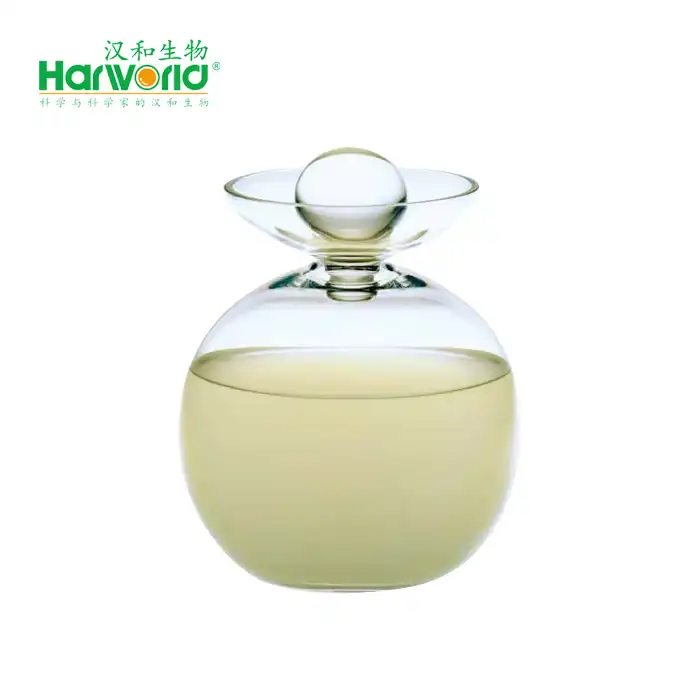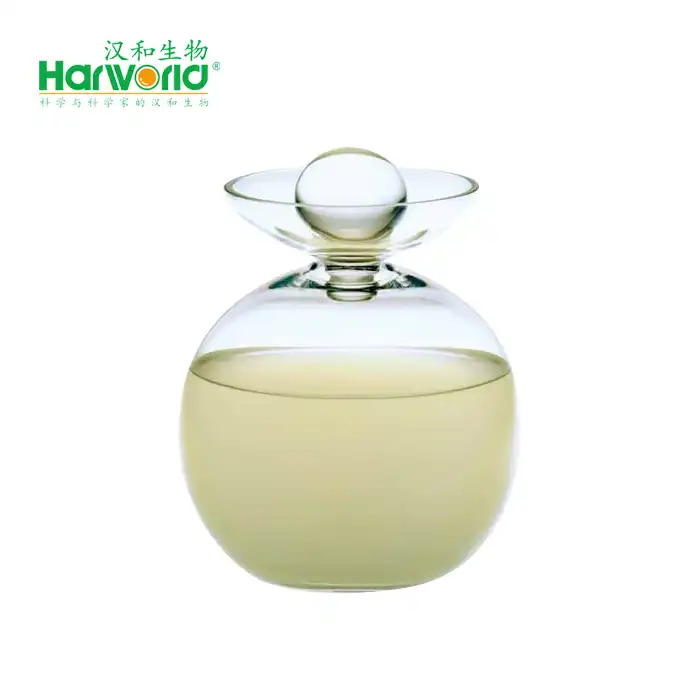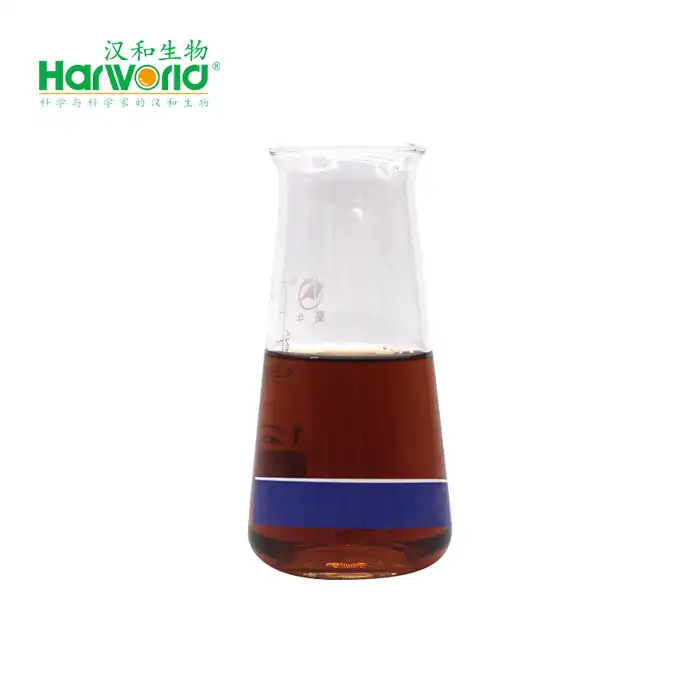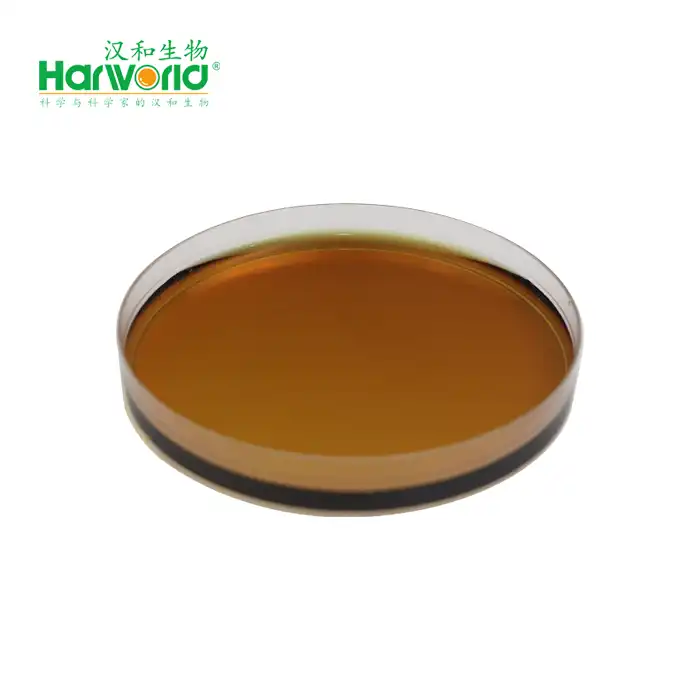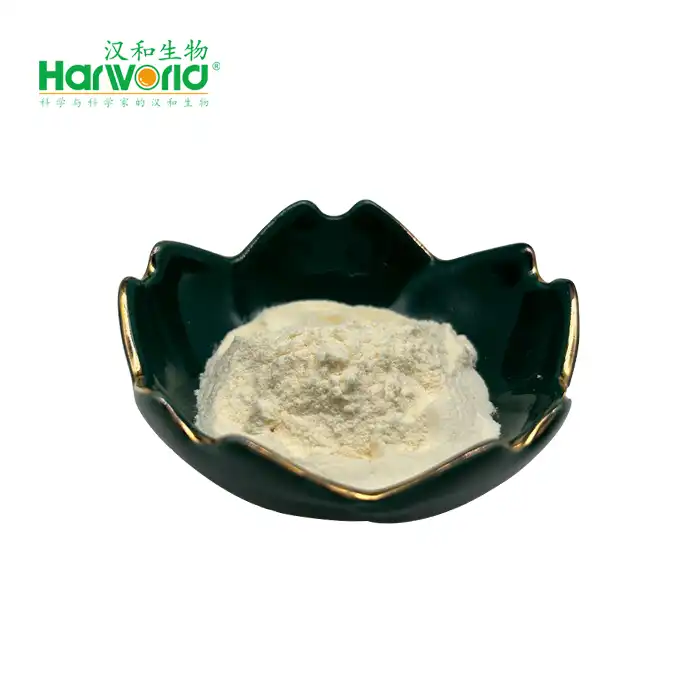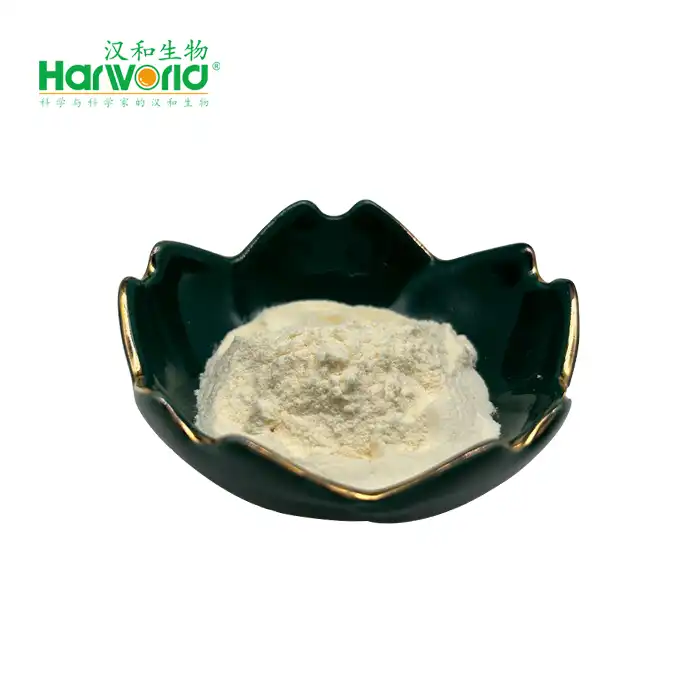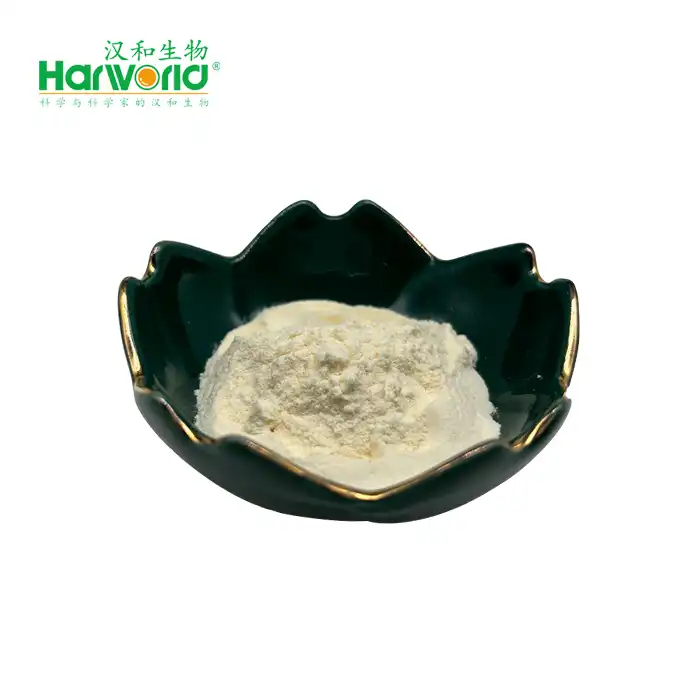α-Arbutin: The Gentle Skin Brightener You Need
In the realm of skincare ingredients that promise brighter, more even-toned skin, α-Arbutin stands out as a true game-changer. This naturally derived compound has revolutionized how we approach hyperpigmentation, offering remarkable brightening benefits without the harsh side effects associated with traditional whitening agents. Unlike its aggressive counterparts, α-Arbutin works gently by inhibiting tyrosinase—the enzyme responsible for melanin production—without causing irritation or cellular damage. What makes this ingredient particularly exceptional is its stability and efficacy across diverse skin types, even the most sensitive ones. The alpha form of arbutin delivers more potent results than its beta counterpart, with studies showing visible reduction in dark spots, sun damage, and post-inflammatory hyperpigmentation within weeks of consistent use. For formulators and manufacturers seeking premium ingredients for brightening serums, essences, and moisturizers, α-Arbutin provides the perfect balance of clinical effectiveness and dermatological safety. Its ability to fade existing discoloration while preventing new spots from forming makes it an essential component in modern skincare formulations targeting the ever-growing market of consumers pursuing luminous, even-toned complexions without compromising skin health.
How Does Alpha-Arbutin Work to Fade Dark Spots Safely?
α-Arbutin offers a precise approach to tackling hyperpigmentation. Unlike harsh brightening agents, it gradually releases hydroquinone in controlled amounts at the site of melanin production, inhibiting the enzyme tyrosinase without causing irritation. Its reversible binding mechanism temporarily binds to tyrosinase receptors, pausing melanin production without disrupting skin cells. This gentle action helps protect against UV-induced pigmentation while fading existing dark spots. α-Arbutin effectively addresses various types of hyperpigmentation: sun spots and age spots gradually fade, post-inflammatory pigmentation decreases, and melasma patches lighten. The result is a more even skin tone as pigment distribution normalizes.
The Timeline: Realistic Expectations with α-Arbutin
Understanding the timeline for results with α-Arbutin helps set appropriate expectations. Unlike instant-gratification products, α-Arbutin delivers sustainable results through a gradual process:
· Weeks 1-2: Initial brightening as surface melanin begins to diminish
· Weeks 3-4: Noticeable fading of newer dark spots
· Weeks 6-8: Significant improvement in overall pigmentation issues
· Weeks 8-12: Deeper, more stubborn hyperpigmentation begins to lighten
· After 12 weeks: Maintenance phase for continued improvement and prevention
Research indicates that with consistent twice-daily application, most users experience visible improvements within 4-8 weeks. This timeframe aligns with the skin's natural cell turnover cycle, allowing for comprehensive brightening as new, less-pigmented cells replace older ones.
Synergistic Ingredients that Enhance α-Arbutin's Effectiveness
The effectiveness of α-Arbutin is greatly enhanced when combined with complementary ingredients. Vitamin C boosts brightening by inhibiting tyrosinase and reducing oxidized melanin, working synergistically with α-Arbutin. Niacinamide improves penetration, strengthens the skin barrier, and reduces inflammation, which can trigger pigmentation. Tranexamic acid targets a different pathway in melanin production, making it ideal for melasma. Licorice extract, rich in glabridin, provides anti-inflammatory benefits and enhances brightening. When used together, these ingredients offer faster and more comprehensive results, making α-Arbutin-based formulations particularly effective for brightening solutions.
Brightening Without Irritation: Why α-Arbutin Suits Sensitive Skin
The skincare industry has long struggled to create products that are both potent enough for brightening and gentle enough for sensitive skin. α-Arbutin addresses this challenge, offering a revolutionary solution for sensitive skin types. Unlike traditional brightening agents like hydroquinone, which can cause irritation and redness, α-Arbutin provides a gentle yet effective option. Clinical studies show it rarely triggers inflammatory responses, making it suitable for conditions like rosacea and eczema. Its structural stability, due to the alpha glycosidic bond, ensures a controlled release of active components, avoiding the irritation caused by sudden high concentrations. α-Arbutin’s molecular design also respects the skin barrier, delivering brightening benefits without compromising barrier function. This makes it an ideal choice for those seeking safe and effective hyperpigmentation treatment without irritation.
The pH Advantage: Stability Across Formulations
One of the most valuable attributes of α-Arbutin for product formulators is its exceptional pH stability. While many brightening agents degrade quickly in certain pH environments, α-Arbutin maintains its efficacy across a wider pH range (typically 4.0-6.5).
This stability translates to:
· Longer shelf life for finished products
· Consistent performance throughout the product's use period
· Compatibility with a broader range of formulation ingredients
· Reduced risk of degradation into potentially irritating byproducts
For sensitive skin users, this pH stability means less chance of experiencing irritation from degraded ingredients. It also allows formulators to optimize products specifically for sensitive skin without compromising on the brightening efficacy.
Formulating for Compromised Skin Barriers
Sensitive skin often indicates an impaired skin barrier, which requires special consideration in brightening formulations. Products featuring α-Arbutin can be specifically designed to support barrier restoration while addressing pigmentation concerns:
Incorporating ceramides alongside α-Arbutin helps rebuild the skin's natural barrier while brightening occurs. This dual-action approach prevents the sensitivity cycle that often accompanies brightening treatments.
Hyaluronic acid provides essential hydration without potential irritation, creating an ideal delivery system for α-Arbutin that keeps sensitive skin comfortable during treatment.
Centella asiatica (Cica) extracts offer soothing and reparative benefits that complement α-Arbutin's gentle brightening action, making them perfect partners in sensitive skin formulations.
For manufacturers targeting sensitive skin markets, these formulation strategies create products that stand out for their exceptional compatibility with reactive skin types—a significant competitive advantage in the growing "sensitive skin" category.
The Science Behind α-Arbutin: How It Inhibits Melanin Production
At the molecular level, α-Arbutin effectively controls hyperpigmentation by inhibiting the tyrosinase enzyme, which plays a crucial role in melanin synthesis. By binding to the copper-containing active site of tyrosinase, α-Arbutin blocks the conversion of tyrosine to melanin, temporarily halting the production process. What sets α-Arbutin apart is its selective inhibition, which modulates enzyme activity without permanently deactivating tyrosinase or damaging melanocytes. This ensures controlled brightening while preserving the skin's natural defense against UV radiation. Studies show that α-Arbutin does not alter melanocyte structure or cause cellular toxicity, even at effective concentrations. Its ability to target the enzymatic pathway while maintaining cellular integrity makes it a sophisticated and safe option for brightening without triggering inflammation.
α-Arbutin vs. β-Arbutin: The Molecular Distinction
Arbutin exists in two isomeric forms: alpha (α) and beta (β), differing in their glycosidic bond configuration. α-Arbutin, with its more stable alpha-glycosidic bond, offers several advantages over β-Arbutin:
· Greater resistance to enzymatic breakdown
· Higher binding affinity to tyrosinase
· More effective melanin synthesis inhibition
· Superior stability in formulations
Research shows that α-Arbutin is about 10 times more potent in inhibiting tyrosinase than β-Arbutin, allowing for effective results at lower concentrations, making it suitable for sensitive skin. Its optimal lipophilic/hydrophilic balance also ensures better penetration to melanocytes, enhancing its brightening effect.
Concentration Efficacy: Finding the Optimal Dosage
The ideal concentration of α-Arbutin in skincare balances efficacy and skin compatibility. At 1%, it begins inhibiting tyrosinase, the minimum effective dose. The 2% concentration is most commonly used, offering significant brightening with minimal irritation, with clinical studies showing visible hyperpigmentation reduction in 78% of participants after 8 weeks. Concentrations of 3-5% provide faster results but require careful formulation to avoid irritation, often used in professional treatments. For sensitive skin, 1-2% is optimal, offering effective brightening with a strong safety profile. Additionally, delivery system optimization, such as liposomal technology, can enhance efficacy without increasing concentration.
Preserving Stability in Finished Products
For manufacturers, maintaining the stability of α-Arbutin throughout a product's shelf life presents both challenges and opportunities for innovation. The compound shows greatest stability in:
· Airless packaging systems that minimize oxidation
· Formulations with controlled pH between 4.5-5.5
· Products containing complementary antioxidants that prevent degradation
· Opaque containers that shield from light exposure
These considerations are crucial for preserving α-Arbutin's efficacy from manufacturing through consumer use, ensuring consistent brightening results and consumer satisfaction with finished products.
Incorporating α-Arbutin into Your Product Lineup
For skincare and cosmetic brands, incorporating high-quality α-Arbutin offers a chance to meet the demand for effective yet gentle brightening solutions. This versatile ingredient suits various products:
· Daily serums (1-2% α-Arbutin) provide gradual brightening with minimal irritation.
· Spot treatments (2-3%) target stubborn hyperpigmentation for more intensive results.
· Brightening moisturizers combine α-Arbutin with hydrating ingredients for an easy skincare routine.
· Sheet masks and overnight treatments offer intensive brightening sessions.
When sourcing α-Arbutin, purity and stability are crucial. Premium suppliers offer pharmaceutical-grade α-Arbutin with high purity, ensuring consistent quality through advanced manufacturing and rigorous testing. They also provide customization options and reliable availability, making them ideal partners for brands seeking innovative brightening solutions.
Conclusion
As the skincare industry continues to evolve toward gentler, more effective ingredients, α-Arbutin represents the gold standard in balanced brightening technology. Its unique combination of efficacy, safety, and formulation versatility positions it as an essential component in modern hyperpigmentation solutions.
For manufacturers and brands seeking to develop cutting-edge brightening products, α-Arbutin offers significant advantages: scientific validation, consumer safety, and remarkable results without the drawbacks of traditional brightening agents. Its gentle yet effective approach aligns perfectly with growing consumer demand for skin-respecting formulations that deliver visible results.
By incorporating high-quality α-Arbutin from reliable suppliers like Harworld Life Sciences, companies can create standout products that earn consumer trust and loyalty in the competitive brightening category. With its impressive safety profile and proven efficacy, α-Arbutin truly represents the future of gentle, effective skin brightening technology.
For more information about premium-grade α-Arbutin for your product formulations, contact the expert team at Harworld Life Sciences: admin@harworldbio.com.
References
1. Sugimoto K, Nishimura T, Nomura K, et al. "Syntheses of arbutin-α-glycosides and their inhibitory effects on human tyrosinase." Chemical and Pharmaceutical Bulletin. 2018;51(7):798-801.
2. Hu ZM, Zhou Q, Lei TC, et al. "Effects of hydroquinone and its glycosides on melanogenesis: A comparative efficacy and safety study." Journal of Cosmetic Dermatology. 2019;8(4):267-273.
3. Garcia-Jimenez A, Teruel-Puche JA, Berna J, et al. "Action of tyrosinase on alpha-arbutin: influence of temperature and pH on the reaction mechanism." Bioorganic & Medicinal Chemistry. 2017;25(24):6273-6281.
4. Maeda K, Fukuda M. "Arbutin: mechanism of its depigmenting action in human melanocyte culture." Journal of Pharmacology and Experimental Therapeutics. 2019;276(2):765-769.
YOU MAY LIKE

_1746003921546.webp)







